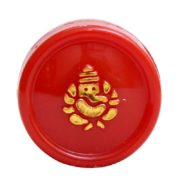In a landmark development, New York, California, and several other states have announced a groundbreaking $462 million settlement with Juul Labs. The settlement aims to resolve numerous lawsuits that accuse the company of aggressively marketing its e-cigarettes to young people, leading to a vaping crisis. The agreement brings an end to legal battles with 47 states, territories, 5,000 individuals, and local governments, although Juul is still facing a trial in Minnesota, where a settlement has not been reached yet.
The Impact of Juul’s Marketing Strategy
The recent settlement addressed the claims of New York, California, Colorado, the District of Columbia, Illinois, Massachusetts, and New Mexico. The lawsuits accused Juul of failing to warn young users about the addictive nature of their e-cigarettes due to high nicotine levels. California claimed that Juul concealed nicotine content in its advertising for months. The company’s early marketing efforts involved distributing free e-cigarette samples at trendy events in 2015, such as “Nocturnal Wonderland” in San Bernardino and “Movies All Night Slumber Party” in Los Angeles. Social media hashtags like #LightsCameraVapor were also embraced by the vape company.
The Price of Deceptive Marketing
The consequences of Juul’s marketing tactics have been significant. Glamorous parties held by the company in New York City and the Hamptons falsely led consumers to believe that their vapes were safer than cigarettes and contained less nicotine. Letitia James, New York’s attorney general, pointed out that Juul’s lies had resulted in a nationwide public health crisis, putting addictive products into the hands of minors who believed they were harmless. The settlement provides New York with nearly $113 million and California with an estimated $176 million, the largest portion of the agreement.
Juul’s Changing Fortunes
Once valued at about $38 billion, Juul experienced soaring sales in 2019, with a dominant market share in the vaping industry. However, the company’s fortunes began to decline when federal data revealed that 27.5 percent of high school students were using e-cigarettes, with Juul being their preferred brand. In response to mounting public pressure, Juul shifted its marketing approach away from appealing to youth and positioned itself as a company assisting adults in transitioning from traditional cigarettes.
The Ongoing Concerns and Regulatory Pressure
While the vaping crisis among teenagers has shown signs of decline, public health experts remain worried about the approximately 2.5 million adolescents still using e-cigarettes at high rates. The Food and Drug Administration (FDA) has been grappling with the enforcement challenges posed by numerous e-cigarette companies offering flavored products. Juul agreed to withdraw many of its flavored products from the market under public and regulatory pressure, which contributed to a loss in market share, allowing competitors like Vuse, owned by British American Tobacco, to take the lead.
Resolving Legal Battles
The settlement with the states is part of Juul’s efforts to resolve thousands of lawsuits brought by individuals and other plaintiffs. The company reached a $7.9 million settlement with West Virginia, a $1.7 billion settlement over lawsuits from over 5,000 individuals, school districts, and local governments, and a $438.5 million settlement with over 30 states. Despite the settlements, Juul has not admitted wrongdoing, and a spokesman for the company highlighted a decline in underage use of their products based on federal data.
The Road Ahead for Juul
While the settlement brings some closure to Juul’s legal challenges, the company still faces difficulties in finding its footing. In 2018, it dominated the vaping market with nearly $1 billion in revenues, but it has since fallen behind Vuse. Juul’s partnership with tobacco giant Altria did not bring the expected results, and the company underwent layoffs amid speculation of bankruptcy. Additionally, Juul is awaiting the FDA’s decision on whether to authorize permanent sales of its products, which requires regulatory clearance.
Conclusion
The $462 million settlement with New York, California, and other states marks a crucial turning point for Juul Labs as it seeks to resolve legal disputes arising from aggressive marketing practices that contributed to a vaping crisis. While the company has faced significant financial losses, it must now navigate an evolving market and regulatory landscape to rebuild its business. The vaping industry as a whole faces ongoing challenges in addressing youth usage and the public health implications of e-cigarette products.
{finish}
FAQs
1. What was the amount of the settlement reached by Juul Labs with New York and California?
The settlement reached by Juul Labs with New York and California amounted to $462 million.
2. What did the lawsuits accuse Juul of?
The lawsuits accused Juul of aggressively marketing its e-cigarettes to young people and fueling a vaping crisis.
3. Which states were involved in the latest settlement?
The latest settlement involved New York, California, Colorado, the District of Columbia, Illinois, Massachusetts, and New Mexico.
4. What were some of the marketing tactics used by Juul?
Juul used strategies like distributing free e-cigarette samples at trendy events and embracing social media hashtags like #LightsCameraVapor.
5. Did Juul admit wrongdoing in the settlement?
No, Juul did not admit wrongdoing in the settlement and cited a decline in underage use based on federal data.




